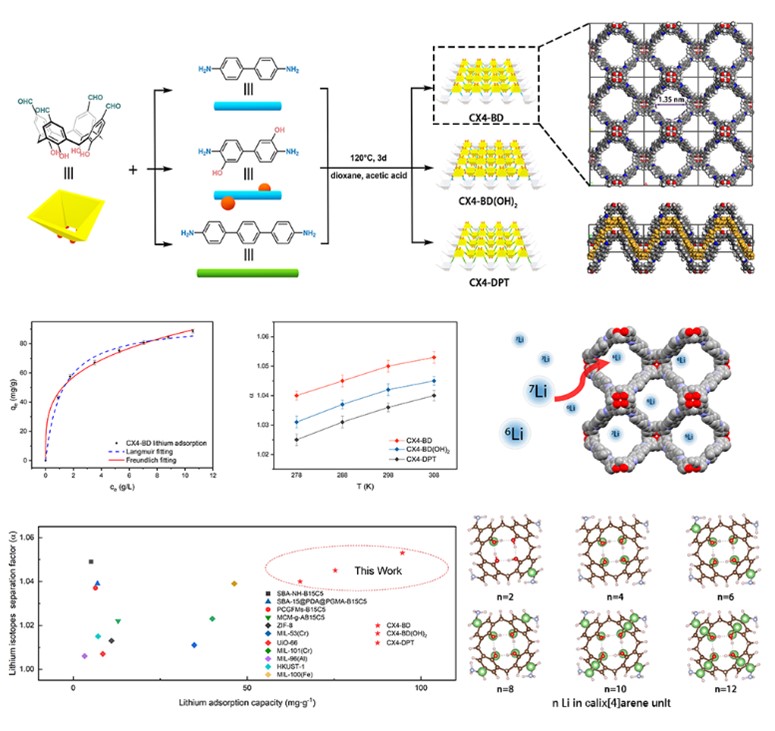Lithium is composed of two stable isotopes (Li-6 and Li-7) with only one neutron difference. Li-6 is a tritium breeding agent in nuclear fusion reactions, and Li-7 can be used as a pH controller in pressurized water reactors. On this account, it is highly necessary to separate lithium isotopes before further use in nuclear reactors. Lithium isotopes share highly similar physical and chemical properties, making them extremely difficult to separate. The COLEX process with excessive use of mercury poses serious environmental concerns. Although solid phase adsorption exhibits high ion selectivity and ease of operation, the adsorption capacity of crown ether grafted solid adsorbent is still limited. Therefore, it is urgent to explore a new type of functional groups and solid-phase adsorption material for lithium isotope separation.

Recently, we reported new calixarene-based solid adsorbents for lithium isotope separation. Three calixarene-decorated covalent organic framework materials (COFs) were synthesized, which exhibited good crystallinity and a wavy two-dimensional layered structure. The lithium adsorption capacity of these COFs can reach up to 94.66 mg · g-1, and the lithium isotope separation coefficient is 1.053 ± 0.002, making it the best lithium isotope separation material reported so far. Density functional theory (DFT) calculations and XPS analysis indicated that the high lithium adsorption capacity came from the abundant adsorption sites on the calixarene units.
These results were published on ACS Applied Materials & Interfaces under the title " calix[4]arene-decorated covalent organic framework conjugates for lithium isotope separation". The first author is Rui Ha, a postgraduate student from the school of materials science and engineering, Xi'an Jiaotong University. The corresponding authors are associate professor Xue Liu (Xi'an Jiaotong University), professor Xiangdong Ding (Xi'an Jiaotong University), and professor Weiqun Shi (Institute of High Energy Physics, Chinese Academy of Sciences). This work is funded by the National Natural Science Foundation and the Top Young Talents Program of Xi’an Jiaotong University.
Link: https://pubs.acs.org/doi/abs/10.1021/acsami.2c20309


